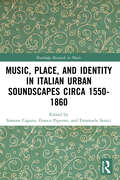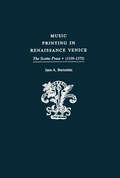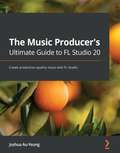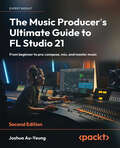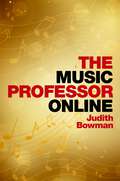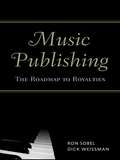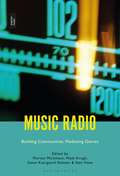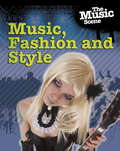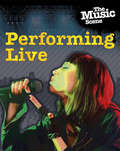- Table View
- List View
Music, Place, and Identity in Italian Urban Soundscapes circa 1550-1860 (Routledge Research in Music)
by Simone Caputo Franco Piperno Emanuele SeniciMusic, Place, and Identity in Italian Urban Soundscapes circa 1550-1860 presents new perspectives on the role music played in the physical, cultural, and civic spaces of Italian cities from the sixteenth to the nineteenth century. Across thirteen chapters, contributors explore the complex connections between sound and space within these urban contexts, demonstrating how music and sound were intimately connected to changing social and political practices. The volume offers a critical redefinition of the core concept of soundscape, considering musical practices through the lenses of territory, space, representation, and identity, in five parts: Soundscape, Phonosphere, and Urban History Urban Soundscapes across Time Urban Soundscapes and Acoustic Communities Urban Soundscapes in Literary Sources Reconstructing Urban Soundscapes in the Digital Era Music, Place, and Identity in Italian Urban Soundscapes circa 1550-1860 reframes our understanding of Italian music history beyond models of patronage, investigating how sounds and musics have contributed to the construction of human identities and communities.
Music, Place, and Identity in Italian Urban Soundscapes circa 1550-1860 (Routledge Research in Music)
Music, Place, and Identity in Italian Urban Soundscapes circa 1550-1860 presents new perspectives on the role music played in the physical, cultural, and civic spaces of Italian cities from the sixteenth to the nineteenth century. Across thirteen chapters, contributors explore the complex connections between sound and space within these urban contexts, demonstrating how music and sound were intimately connected to changing social and political practices. The volume offers a critical redefinition of the core concept of soundscape, considering musical practices through the lenses of territory, space, representation, and identity, in five parts: Soundscape, Phonosphere, and Urban History Urban Soundscapes across Time Urban Soundscapes and Acoustic Communities Urban Soundscapes in Literary Sources Reconstructing Urban Soundscapes in the Digital Era Music, Place, and Identity in Italian Urban Soundscapes circa 1550-1860 reframes our understanding of Italian music history beyond models of patronage, investigating how sounds and musics have contributed to the construction of human identities and communities.
Music Practices Across Borders: (E)Valuating Space, Diversity and Exchange (Musik und Klangkultur #35)
by Glaucia Peres Da Silva Konstantin HondrosConnecting migration studies and the theory of valuation, this collection offers an interdisciplinary approach to the study of transnational music practices. Conceiving music as a practice not confined to audibility, the contributions reveal how music emerges in concrete situations through people, objects, techniques, meanings, and emotions in different parts of the world and during different historic periods. Values are thereby created and shared, and creative processes are evaluated in terms of diversity, space and exchange. This book presents cases of contemporary, popular and traditional music, festivals and trade fairs, albums and band projects, shedding light on the tensions between the transfer, reconstruction and creation of music in different contexts.
The Music Practitioner: Research for the Music Performer, Teacher and Listener
by JaneW. DavidsonUseful work has been done in recent years in the areas of music psychology, philosophy and education, yet this is the first book to provide a wide assessment of what practical benefits this research can bring to the music practitioner. With 25 chapters by writers representing a broad range of perspectives, this volume is able to highlight many of the potential links between music research and practice. The chapters are divided into five main sections. Section one examines practitioners use of research to assist their practice and the ways in which they might train to become systematic researchers. Section two explores research centred on perception and cognition, while section three looks at how practitioners have explored their everyday work and what this reveals about the creative process. Section four focuses on how being a musician affects an individual‘s sense of self and the how others perceive him or her. The essays in section five outline the new types of data that creative researchers can provide for analysis and interpretation. The concluding chapter discusses that key question - what makes music affect us in the way it does? The research findings in each chapter provide useful sources of data and raise questions that are applicable across the spectrum of music-related disciplines. Moreover, the research methodologies applied to a specific question may have broader application for readers wishing to take on research themselves.
The Music Practitioner: Research for the Music Performer, Teacher and Listener
by JaneW. DavidsonUseful work has been done in recent years in the areas of music psychology, philosophy and education, yet this is the first book to provide a wide assessment of what practical benefits this research can bring to the music practitioner. With 25 chapters by writers representing a broad range of perspectives, this volume is able to highlight many of the potential links between music research and practice. The chapters are divided into five main sections. Section one examines practitioners use of research to assist their practice and the ways in which they might train to become systematic researchers. Section two explores research centred on perception and cognition, while section three looks at how practitioners have explored their everyday work and what this reveals about the creative process. Section four focuses on how being a musician affects an individual‘s sense of self and the how others perceive him or her. The essays in section five outline the new types of data that creative researchers can provide for analysis and interpretation. The concluding chapter discusses that key question - what makes music affect us in the way it does? The research findings in each chapter provide useful sources of data and raise questions that are applicable across the spectrum of music-related disciplines. Moreover, the research methodologies applied to a specific question may have broader application for readers wishing to take on research themselves.
Music Printing in Renaissance Venice: The Scotto Press (1539-1572)
by Jane A. BernsteinVenetian music print culture of the mid-sixteenth century is presented here through a study of the Scotto press, one of the foremost dynastic music publishers of the Renaissance. For over a century, the house of Scotto played a pivotal role in the international book trade, publishing in a variety of fields including philosophy, medicine, religion, and music. This book examines the mercantile activities of the firm through both a historical study, which illuminates the wide world of the Venetian music printing industry, and a catalog, which details the music editions brought out by the firm during its most productive period. A valuable reference work, this book not only enhances our understanding of the socioeconomic and cultural history of Renaissance Venice, it also helps to preserve our knowledge of a vast musical repertory.
The Music Producer's Creative Guide To Ableton Live 11: Level Up Your Music Recording, Arranging, Editing, And Mixing Skills And Workflow Techniques
by Anna Lakatos Ski OakenfullLevel up your music recording, arranging, editing, and mixing skills and workflow techniques
The Music Producer's Ultimate Guide to FL Studio 20: Create production-quality music with FL Studio
by Joshua Au-YeungLeverage the power of FL Studio 20 to create and compose production-quality songs and develop professional music production skillKey FeaturesLeverage the power of FL Studio to create your own production-level musicDevelop widely applicable music production skills and learn how to promote your musicUtilize cutting-edge tools to fuel your creative ideas and publish your songsBook DescriptionFL Studio is a cutting-edge software music production environment. It's an extremely powerful and easy to use tool for creating music. This book will give you everything you need to produce music with FL Studio at a professional level. You'll begin by exploring FL studio 20's vast array of tools and discover best practices, tips, and tricks for creating music. You'll learn how to set up your studio environment, create a beat, compose a melody and chord progression, mix sounds with effects, and export songs. You'll learn how to use tools such as the Piano roll, mixer console, audio envelopes, types of compression, equalizers, vocoders, vocal chops, and tools for increasing stereo width. The book introduces you to mixing best practices and how to master your songs. Along the way, you'll explore glitch effects and create your own instruments and custom designed effect chains. We'll also cover ZGameEditor Visualizer, a tool for creating reactive visuals for your songs. Finally, you'll learn how to register, sell, and promote your music. By the end of this FL Studio book, you'll be able to utilize cutting-edge tools to fuel your creative ideas, mix music effectively, and publish your songs.What you will learnGet up and running with FL Studio 20Record live instruments and vocals and process themCompose melodies and chord progressions on the Piano rollDiscover mixing techniques and apply effects to your tracksExplore best practices to produce music like a professionalPublish songs in online stores and promote your music effectivelyWho this book is forThis book is for music producers, composers, songwriters, DJs, and audio engineers interested in creating their own music, improving music production skills, mixing and mastering music, and selling songs online. To get started with this book, all you need is a computer and FL Studio.
The Music Producer's Ultimate Guide To Fl Studio 21: From Beginner To Pro: Compose, Mix, And Master Music
by Joshua Au-YeungThe Music Profession in Britain, 1780-1920: New Perspectives on Status and Identity (Music in Nineteenth-Century Britain)
by Rosemary GoldingProfessionalisation was a key feature of the changing nature of work and society in the nineteenth century, with formal accreditation, registration and organisation becoming increasingly common. Trades and occupations sought protection and improved status via alignment with the professions: an attempt to impose order and standards amid rapid social change, urbanisation and technological development. The structures and expectations governing the music profession were no exception, and were central to changing perceptions of musicians and music itself during the long nineteenth century. The central themes of status and identity run throughout this book, charting ways in which the music profession engaged with its place in society. Contributors investigate the ways in which musicians viewed their own identities, public perceptions of the working musician, the statuses of different sectors of the profession and attempts to manipulate both status and identity. Ten chapters examine a range of sectors of the music profession, from publishers and performers to teachers and military musicians, and overall themes include class, gender and formal accreditation. The chapters demonstrate the wide range of sectors within the music profession, the different ways in which these took on status and identity, and the unique position of professional musicians both to adopt and to challenge social norms.
The Music Profession in Britain, 1780-1920: New Perspectives on Status and Identity (Music in Nineteenth-Century Britain)
by Rosemary GoldingProfessionalisation was a key feature of the changing nature of work and society in the nineteenth century, with formal accreditation, registration and organisation becoming increasingly common. Trades and occupations sought protection and improved status via alignment with the professions: an attempt to impose order and standards amid rapid social change, urbanisation and technological development. The structures and expectations governing the music profession were no exception, and were central to changing perceptions of musicians and music itself during the long nineteenth century. The central themes of status and identity run throughout this book, charting ways in which the music profession engaged with its place in society. Contributors investigate the ways in which musicians viewed their own identities, public perceptions of the working musician, the statuses of different sectors of the profession and attempts to manipulate both status and identity. Ten chapters examine a range of sectors of the music profession, from publishers and performers to teachers and military musicians, and overall themes include class, gender and formal accreditation. The chapters demonstrate the wide range of sectors within the music profession, the different ways in which these took on status and identity, and the unique position of professional musicians both to adopt and to challenge social norms.
The Music Professor Online
by Judith BowmanThe Music Professor Online is a practical volume that provides a window into online music instruction in higher education. Author Judith Bowman highlights commonalities between online and face-to-face teaching, presents a theoretical framework for online learning, and provides practical models and techniques based on interviews with professors teaching online in various music disciplines. This book offers keys for thinking about music education in a post-COVID world, when the importance and interest of online education is of central concern. Part I reviews the growth and significance of online learning and online learning in music, identifies similarities and differences between face-to-face and online teaching, and presents standards and principles for online instruction. It explores development of an online teaching persona, explains teaching presence, and emphasizes the central role of the instructor as director of learning, always in relation to specific disciplines and their signature pedagogies. Part II focuses on the lived online curriculum, featuring online teaching experiences in key fields by professors teaching them online. Bowman explores specific disciplines and their signature pedagogies together with practitioner profiles that provide insights into the thinking and techniques of excellent online music instructors, together with recommendations for prospective online instructors and lessons drawn from the field. Part III summarizes recommendations and lessons from online practitioners, presents an action plan for moving forward with online music instruction, and looks to the future of online instruction in music. Educators will find great use in this comprehensive, thoughtful compendium of reflections from a leading, longtime online music educator.
The Music Professor Online
by Judith BowmanThe Music Professor Online is a practical volume that provides a window into online music instruction in higher education. Author Judith Bowman highlights commonalities between online and face-to-face teaching, presents a theoretical framework for online learning, and provides practical models and techniques based on interviews with professors teaching online in various music disciplines. This book offers keys for thinking about music education in a post-COVID world, when the importance and interest of online education is of central concern. Part I reviews the growth and significance of online learning and online learning in music, identifies similarities and differences between face-to-face and online teaching, and presents standards and principles for online instruction. It explores development of an online teaching persona, explains teaching presence, and emphasizes the central role of the instructor as director of learning, always in relation to specific disciplines and their signature pedagogies. Part II focuses on the lived online curriculum, featuring online teaching experiences in key fields by professors teaching them online. Bowman explores specific disciplines and their signature pedagogies together with practitioner profiles that provide insights into the thinking and techniques of excellent online music instructors, together with recommendations for prospective online instructors and lessons drawn from the field. Part III summarizes recommendations and lessons from online practitioners, presents an action plan for moving forward with online music instruction, and looks to the future of online instruction in music. Educators will find great use in this comprehensive, thoughtful compendium of reflections from a leading, longtime online music educator.
Music Psychology (Classic European Studies in the Science of Music)
by Ernst KurthThe first edition of Ernst Kurth’s Musikpsychologie appeared in 1931, and was regarded by contemporaneous psychologists as no less than the foundation for a new systematic approach to the perception and cognition of music. Time has hardly diminished Kurth’s standing as an original scholar with a distinctive point of view. Music theorists, both in Europe and North America, regard him as an important figure in the history of music theory. Daphne Tan and Christoph Neidhöfer’s first full translation provides English-speaking theorists the opportunity to delve deeper into his ideas. Indeed, Kurth’s concerns – listening habits and habituation, metaphorical language, the limits of memory, and the role of the body in music experience, to name a few – are shared by many in the field today, especially scholars who work at the intersections of music theory, psychology, linguistics, and related disciplines. And while Kurth’s approach lacks the scientific rigour of modern-day empirical musicology, Musikpsychologie nevertheless presents a source of testable hypotheses for those working in the area of music perception and cognition. This translation of Musikpsychologie also has the potential to inspire a new generation of composers, especially through the topics in the second section (energy, force, space, and matter) and, given the inherently interdisciplinary nature of this book and the number of philosophical and scientific sources Kurth incorporates, it will appeal to those interested in the history of science and particularly in the emergence of psychology as an academic discipline in the early 20th century.
Music Psychology (Classic European Studies in the Science of Music)
by Ernst KurthThe first edition of Ernst Kurth’s Musikpsychologie appeared in 1931, and was regarded by contemporaneous psychologists as no less than the foundation for a new systematic approach to the perception and cognition of music. Time has hardly diminished Kurth’s standing as an original scholar with a distinctive point of view. Music theorists, both in Europe and North America, regard him as an important figure in the history of music theory. Daphne Tan and Christoph Neidhöfer’s first full translation provides English-speaking theorists the opportunity to delve deeper into his ideas. Indeed, Kurth’s concerns – listening habits and habituation, metaphorical language, the limits of memory, and the role of the body in music experience, to name a few – are shared by many in the field today, especially scholars who work at the intersections of music theory, psychology, linguistics, and related disciplines. And while Kurth’s approach lacks the scientific rigour of modern-day empirical musicology, Musikpsychologie nevertheless presents a source of testable hypotheses for those working in the area of music perception and cognition. This translation of Musikpsychologie also has the potential to inspire a new generation of composers, especially through the topics in the second section (energy, force, space, and matter) and, given the inherently interdisciplinary nature of this book and the number of philosophical and scientific sources Kurth incorporates, it will appeal to those interested in the history of science and particularly in the emergence of psychology as an academic discipline in the early 20th century.
Music Publishing: The Roadmap to Royalties
by Ron Sobel Dick WeissmanMusic Publishing covers the basics of how a composition is copyrighted, published, and promoted. Publishing in the music business goes far beyond the physical sheet--it includes live performance and mechanical (recording) rights, and income streams from licensing deals of various kinds. A single song can generate over thirty different royalty streams, and a writer must know how these royalties are calculated and who controls the flow of the money. Taking a practical approach, the authors -- one a successful music publisher and attorney, the other a songwriter and music business professor -- explain in simple terms the basic concept of copyright law as it pertains to compositions. Throughout, they give practical examples from "real world" situations that illuminate both potential pitfalls and possible upsides for the working composers.
Music Publishing: The Roadmap to Royalties
by Ron Sobel Dick WeissmanMusic Publishing covers the basics of how a composition is copyrighted, published, and promoted. Publishing in the music business goes far beyond the physical sheet--it includes live performance and mechanical (recording) rights, and income streams from licensing deals of various kinds. A single song can generate over thirty different royalty streams, and a writer must know how these royalties are calculated and who controls the flow of the money. Taking a practical approach, the authors -- one a successful music publisher and attorney, the other a songwriter and music business professor -- explain in simple terms the basic concept of copyright law as it pertains to compositions. Throughout, they give practical examples from "real world" situations that illuminate both potential pitfalls and possible upsides for the working composers.
Music, Race, and Nation: Musica Tropical in Colombia (Chicago Studies in Ethnomusicology)
by Peter WadeLong a favorite on dance floors in Latin America, the porro, cumbia, and vallenato styles that make up Colombia's música tropical are now enjoying international success. How did this music—which has its roots in a black, marginal region of the country—manage, from the 1940s onward, to become so popular in a nation that had prided itself on its white heritage? Peter Wade explores the history of música tropical, analyzing its rise in the context of the development of the broadcast media, rapid urbanization, and regional struggles for power. Using archival sources and oral histories, Wade shows how big band renditions of cumbia and porro in the 1940s and 1950s suggested both old traditions and new liberties, especially for women, speaking to a deeply rooted image of black music as sensuous. Recently, nostalgic, "whitened" versions of música tropical have gained popularity as part of government-sponsored multiculturalism. Wade's fresh look at the way music transforms and is transformed by ideologies of race, nation, sexuality, tradition, and modernity is the first book-length study of Colombian popular music.
Music Radio: Building Communities, Mediating Genres
by Morten Michelsen Mads Krogh Steen Kaargaard Nielsen Iben HaveWhy is music so important to radio? This anthology explores the ways in which musical life and radio interact, overlap and have influenced each other for nearly a century. One of music radio's major functions is to help build smaller or larger communities by continuously offering broadcast music as a means to create identity and senses of belonging. Music radio also helps identify and develop musical genres in collaboration with listeners and the music industry by mediating and by gatekeeping.Focusing on music from around the world, Music Radio discusses what music radio is and why or for what purposes it is produced. Each essay illuminates the intricate cultural processes associated with music and radio and suggests ways of working with such complexities.
Music Radio: Building Communities, Mediating Genres
by Morten Michelsen Mads Krogh Steen Kaargaard Nielsen Iben HaveWhy is music so important to radio? This anthology explores the ways in which musical life and radio interact, overlap and have influenced each other for nearly a century. One of music radio's major functions is to help build smaller or larger communities by continuously offering broadcast music as a means to create identity and senses of belonging. Music radio also helps identify and develop musical genres in collaboration with listeners and the music industry by mediating and by gatekeeping.Focusing on music from around the world, Music Radio discusses what music radio is and why or for what purposes it is produced. Each essay illuminates the intricate cultural processes associated with music and radio and suggests ways of working with such complexities.
Music, Radio and the Public Sphere: The Aesthetics of Democracy
by Charles FairchildRadio, the most widely used medium in the world, is a dominant mediator of musical meaning. Through a combination of critical analysis, interdisciplinary theory and ethnographic writing about community radio, this book provides a novel theorization of democratic aesthetics, with important implications for the study of old and new media alike.
Music Recommendation and Discovery: The Long Tail, Long Fail, and Long Play in the Digital Music Space
by Òscar CelmaIn the last 15 years we have seen a major transformation in the world of music. - sicians use inexpensive personal computers instead of expensive recording studios to record, mix and engineer music. Musicians use the Internet to distribute their - sic for free instead of spending large amounts of money creating CDs, hiring trucks and shipping them to hundreds of record stores. As the cost to create and distribute recorded music has dropped, the amount of available music has grown dramatically. Twenty years ago a typical record store would have music by less than ten thousand artists, while today online music stores have music catalogs by nearly a million artists. While the amount of new music has grown, some of the traditional ways of ?nding music have diminished. Thirty years ago, the local radio DJ was a music tastemaker, ?nding new and interesting music for the local radio audience. Now - dio shows are programmed by large corporations that create playlists drawn from a limited pool of tracks. Similarly, record stores have been replaced by big box reta- ers that have ever-shrinking music departments. In the past, you could always ask the owner of the record store for music recommendations. You would learn what was new, what was good and what was selling. Now, however, you can no longer expect that the teenager behind the cash register will be an expert in new music, or even be someone who listens to music at all.
Music Representation and Transformation in Software: Structure and Algorithms in Python
by Donald P. PazelThis book takes the reader on a journey through music concepts in an organized approach that develops music essentials from the concepts of tone, pitch, and time, through notes, intervals, chords, and scores while at the same time interpreting these elements as software artifacts. Close attention is paid to the organization of and relationships amongst these concepts and their representation as Python classes and objects, to learn about music from a software design viewpoint.The first part of the book focuses on software representation of the main elements found in music theory. Its objective is to provide direction to students on how to build a music software model from basic concepts and grow towards more complex concepts. Chapter by chapter, music concepts are introduced, and each is broken apart into related data properties and methods with the goal that by the end of this section, the reader will have developed a relatively complete library of music elements in software. The second part takes on the task of applying that foundation to the subject of “music transformations”. The focus is on localized transformations, that is, transformations isolated to a few measures. After a general introduction, the discussion includes topics of pitch assignment, key change, melodic inversion, melodic shaping, harmonic transcription, retrograde, melodic search and dilation. This textbook is designed as a principal or supplemental source for computer science, software engineering, and programming courses. It can also be used as a main textbook for advanced computer music courses or electronic music courses. Computer music software professionals interested in learning how to model the complexities of music theory artifacts, or music students who want to learn advanced programming techniques in their domain will also find the book helpful.
The Music Scene: Music, Fashion and Style (The\music Scene Ser.)
by Matt AnnissThe Music Scene offers a detailed yet readable look at the world of contemporary music for young people. Full of practical, how-to advice and fascinating case studies on many of the world's favourite bands and artists, The Music Scene examines live gigs, recording and contracts, publicity, merchandising and changing fashions in contemporary music. Written by a music journalist, The Music Scene is certain to strike a chord with any aspiring young pop musician.
The Music Scene: Performing Live (The\music Scene Ser.)
by Matt AnnissThe Music Scene offers a detailed yet readable look at the world of contemporary music for young people. Full of practical, how-to advice and fascinating case studies on many of the world's favourite bands and artists, The Music Scene examines live gigs, recording and contracts, publicity, merchandising and changing fashions in contemporary music. Written by a music journalist, The Music Scene is certain to strike a chord with any aspiring young pop musician.
